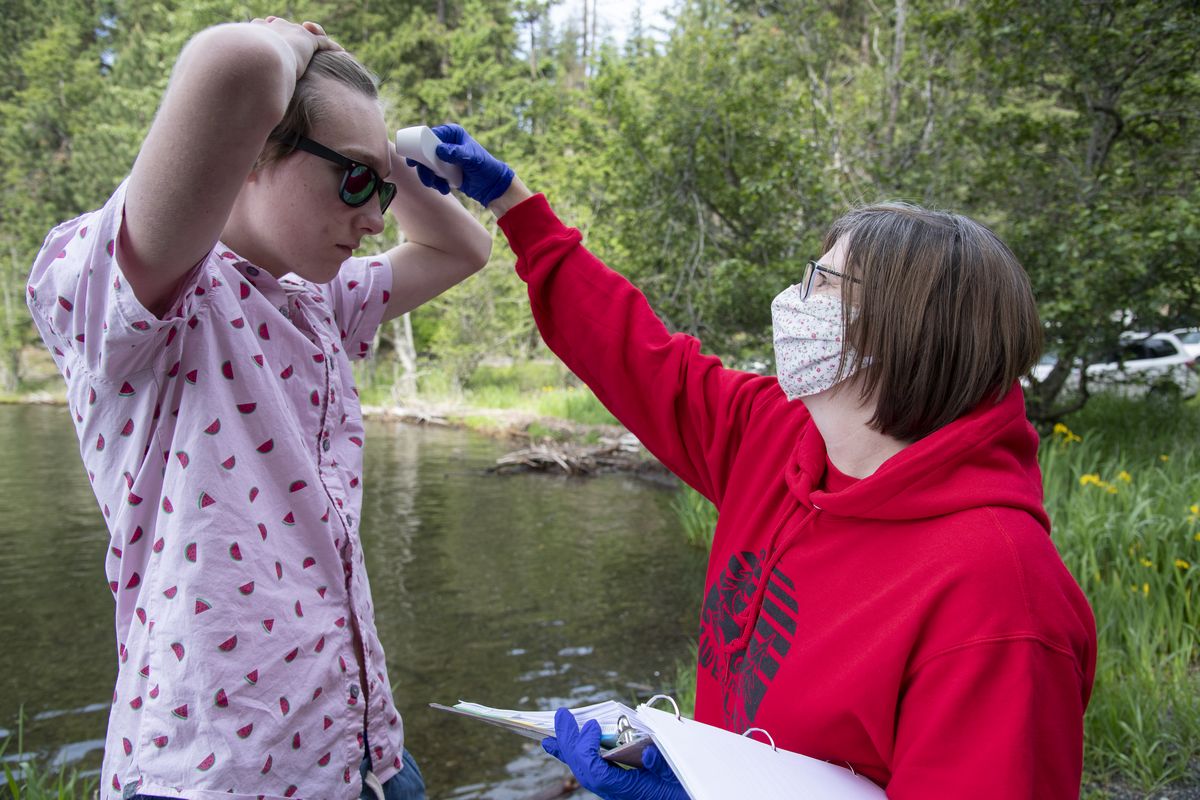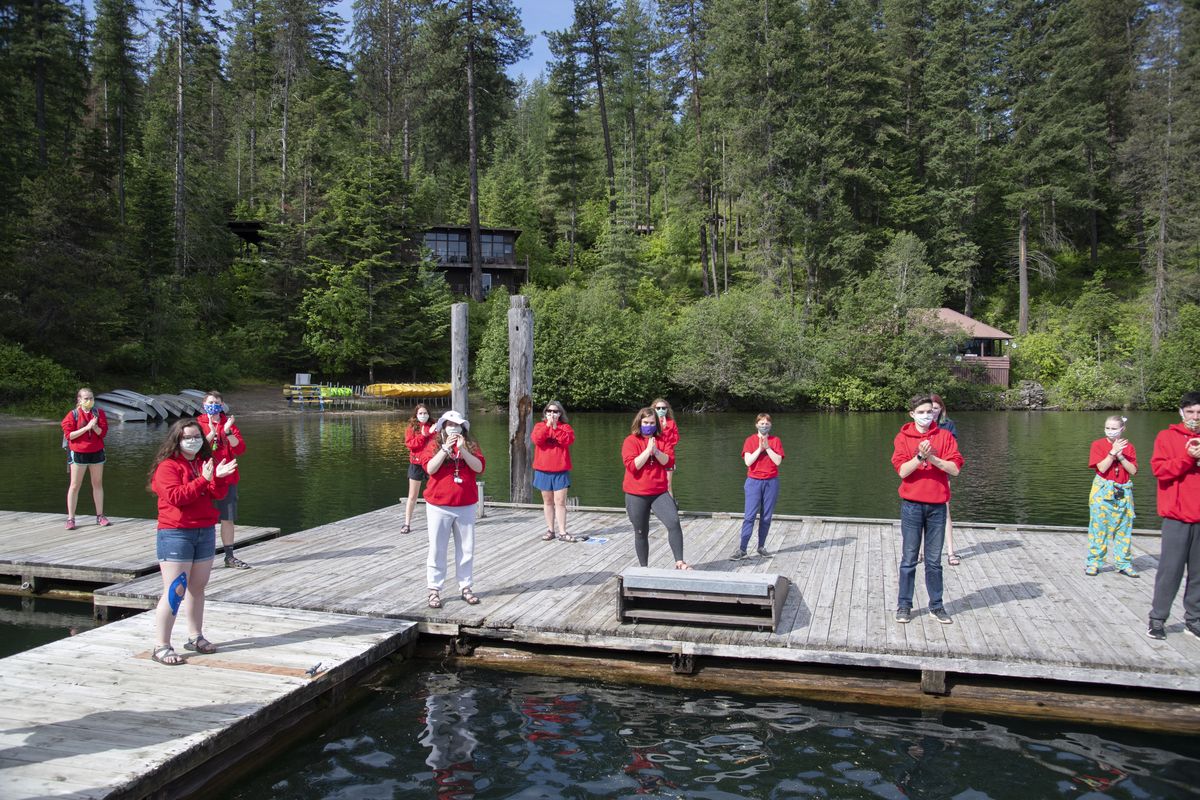Sweyolakan: Camp’s on for kids’ sake

Summertime at Camp Sweyolakan will look a bit different this year because of COVID-19, but organizers say the multiple safety adjustments are worth bringing kids some normalcy.
Small groups of campers will stick together all week with social distancing from others, but there’s still freedom of jumping into the lake and singing camp songs.
Camp Fire Inland Northwest decided to go ahead with weeklong sessions at its 300-acre facility on Lake Coeur d’Alene’s Mica Bay after adopting state and federal guidelines prepared weeks ahead. Sweyolakan’s first camper group was scheduled Sunday, with 35 to 40 children arriving in staggered times at distanced welcome stations. They’ll have stages of health checks and be broken into “households” that will remain their small camp group.
“We are a boat access-only location, and we’re just uniquely set up to be able to provide this experience for kids,” said Poppy White, Camp Fire Inland Northwest’s camping and program services director. “We’re a rustic, traditional outdoor summer camp. All of our sleeping cabins are open air, which allows for all that crucial ventilation. We’ll be sleeping our campers head to foot as we decrease cabin volume sizes so we can create that distance.”

White said each camp household includes one adult to six kids for younger children and about a 1-to-8 ratio for older ages. “While camp is going to look a lot different, it’s still going to be that same fun, safe place to learn and grow this summer.”
Leaders also decided to move plans forward because kids have been isolated from school ties and friends since March, said Wendy Williams-Gilbert, who is Camp Sweyolakan’s lead camp nurse. She said all the camp’s staff and nurses will be trained to recognize and respond to any mental health issues and even signs of possible neglect and abuse among campers ranging in ages from 5 to 18.
“I think everybody is feeling a lot of stress and anxiety as school is wrapping up,” Williams-Gilbert said. “I think having a camp experience, especially a safe camp experience, gives the kids and their families kind of both some breathing room and some normalcy for the summer and just the opportunity to really connect as much as we are all distanced from each other.”
School systems have screening in place that can catch mental health and physical issues, but that’s been missing, she said.
“While we understand a lot of our campers may not be at risk, we do have high numbers of kids in our community who are at risk for abuse and neglect,” Williams-Gilbert said. “With students not in school and not in after-school programs, and with the limited contact, we may see an increase in abuse and neglect, a variety of things that the schools would have picked up. We’re also looking at the mental health aspect with these kids.”
Jesse Tinsley
- The Spokesman-Review
The staff is primarily college students, so there also will be attention paid to that group’s mental health, White said.
“We’ve always trained on mandatory reporting,” she said. “This year, we will be focusing a bit more on being intentional with our staff when those disclosures come in. We anticipate there may be a spike in disclosures this summer.”
The additional safety preparations because of the coronavirus start before kids’ arrival. Williams-Gilbert said parents received information on steps to expect, and it requests only one parent or family member to drop a child off for arrival times to limit the number of people. They’re asked to take a child’s temperature and screen them at home before the trip out.
Camp members with nursing staff will greet children at the distanced arrival stations for another check of temperatures and health screening questions.
Once on-site, the activities from archery to swimming will remain similar this summer, but as the small groups cycle through, a sanitation crew will clean all equipment and surfaces before the next group arrives.
The normally communal dining operation has changed significantly, White said, with staggered entrances and exits for camp households. The groups will remain distanced as they queue up and leave. The tables will sit 9 feet apart while camp staff wear masks and gloves for food service and to place utensils out for the children to set a table.
“What dining normally looks like is community – or family-style eating, and we’d normally mix as an entire group because it gives campers an opportunity to get to know each other and meet others,” White said. “We have changed it this year.
“When they go in to retrieve their hot items, there will be 6-foot markings on the floor. Normally, kids would learn during summer camp to set a table and would go to a closet and retrieve all the utensils and plates. Now, we’ll have all those items placed there by sanitary means so our staff will be masked and wear gloves and then place all needed items on the table for kids to set.
“We used to stand in our units before the meal, and that would be four or five camper groups from one age group. We’re spreading them out now across what we call our main beach area, so there will be 6 to 8 feet between every household.”
Another popular kids’ summer experience, YMCA Camp Reed, canceled its traditional summer camps this year because of COVID-19 but is offering family cabin rentals for household members who have quarantined together. If Spokane moves into Phase 3 this summer, it plans pop-up day camps three days a week at Finch Arboretum, said Camp Reed executive director Phil Harrison.
He said Camp Reed also will offer free weekly virtual sessions to connect with kids, including traditional skits.
Camp Fire Inland Northwest recently opened its day camp Dart-Lo in north Spokane, White said, but it can’t offer bus transportation or swimming pool access due to Phase 2 restrictions.
For Camp Sweyolakan, organizers followed updates from Idaho and Washington along with the Centers for Disease Control and Prevention and the American Camp Association, among other entities, White said.
Under requirements, it also posted a plan on how to handle any infectious outbreaks that includes reduced camp capacity and having separate quarters available if a group would need to quarantine with a nurse until tests come back. Despite the work to meet guidelines and the steps for additional safety, the needs of children outweighed it all, White said.
“We believe with the disruption to our youths’ education for their social and educational learning the last three months that we have the opportunity to meet a need for our kids, and we want to meet that need.”